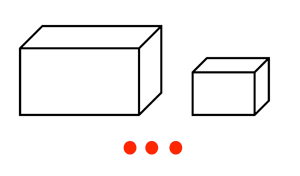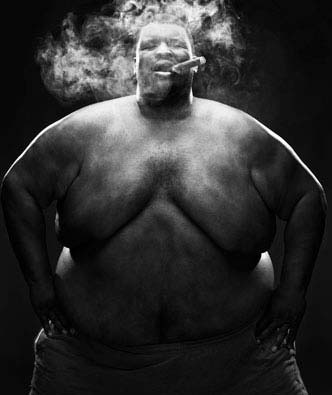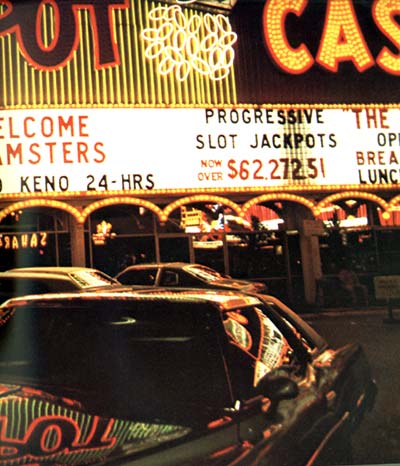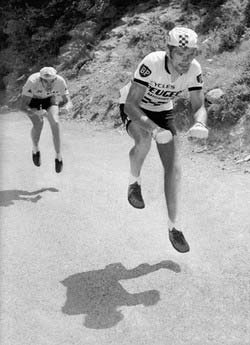leisure
I much prefer the cheeks where ruddy blood is leaping, and when a corpse approaches, close my house: It goes with me, as with the cat the mouse.
In the 1940s, the Dutch psychologist Adrian de Groot performed a landmark study of chess experts. Although de Groot was an avid chess amateur – he belonged to several clubs - he grew increasingly frustrated by his inability to compete with more talented players. De Groot wanted to understand his defeats, to identify the mental skills that he was missing. His initial hypothesis was that the chess expert were blessed with a photographic memory, allowing them to remember obscure moves and exploit the minor mistakes of their opponents.
De Groot’s first experiment seemed to confirm this theory: He placed twenty different pieces on a chess board, imitating the layout of a possible game. Then, de Groot asked a variety of chess players, from inexperienced amateurs to chess grandmasters, to quickly glance at the board and try to memorize the location of each piece. As the scientists expected, the amateurs drew mostly blanks. The grandmasters, however, easily reproduced the exact layout of the game. The equation seemed simple: memory equals talent.
But then de Groot performed a second experiment that changed everything. Instead of setting the pieces in patterns taken from an actual chess game, he randomly scattered the pawns and bishops and knights on the board. If the best chess players had enhanced memories, then the location shouldn’t matter: a pawn was still a pawn. To de Groot’s surprise, however, the grandmaster edge now disappeared. They could no longer remember where the pieces had been placed.
For de Groot, this failure was a revelation, since it suggested that talent wasn’t about memory – it was about perception. The grandmasters didn’t remember the board better than amateurs. Rather, they saw the board better, instantly translating the thirty-two chess pieces into a set of meaningful patterns. They didn’t focus on the white bishop or the black pawn, but instead grouped the board into larger strategies and structures, such as the French Defense or the Reti Opening.
This mental process is known as “chunking” and it’s a crucial element of human cognition. As de Groot demonstrated, chess grandmasters automatically chunk the board into a set of known patterns, which allow them to instantly sort through the messy details of the game. And chunking isn’t just for chess experts: While reading this sentence, your brain is effortlessly chunking the letters, grouping the symbols into lumps of meaning. As a result, you don’t have to sound out each syllable, or analyze the phonetics; your literate brain is able to skip that stage of perception. This is what expertise is: the ability to rely on learned patterns to compensate for the inherent limitations of information processing in the brain. As George Miller famously observed, we can only consciously make sense of about seven bits of information (plus or minus two) at any given moment. Chunking allows us to escape this cognitive trap.
I recollect a young man putting the same question to Eddie the Dude. ‘Son,’ Eddie told him, ‘all you paid was the looking price. Lessons are extra.’

Recently there was a discussion in the TwoPlusTwo “News, Views, and Gossip” forum, now closed, about a new video casino game that might be of interest to poker players. Called, “Texas Hold’em Heads Up Poker”, it’s a slot machine style console that contains a computer that plays regular old heads-up limit Texas hold ‘em against players who care to put up their money.
What’s especially intriguing is that there’s no rake of any kind charged. Assuming it’s not cheating, which seems unlikely for a machine licensed in Nevada and built by a reputable manufacturer, the only way it can win in the long term is if it plays better than its opponents. That’s an intriguing proposition to anyone interested in the game of poker.
I have a background in software development, game theory, and have been writing an article series for Two Plus Two Magazine reviewing research on developing effective poker playing software, so investigating a game such as this one is right up my alley.
She said, ‘How you gonna like ‘em, over medium or scrambled?’

The best poker players are masters of deception. They’re good at manipulating the actions of other players, while masking their own so that their lies become undetectable. But even the best deceivers have tells, and Meghana Bhatt from Baylor University has found some fascinating ones. By scanning the brains and studying the behaviour of volunteers playing a simple bargaining game, she has found different patterns of brain activity that correspond to different playing styles. These “neural signatures” separate the players who are adept at strategic deception from those who play more straightforwardly.
photo { Helen Korpak }
If the old model is broken, what will work in its place?

You have a large box, a small box, and three stones. How can you put the stones in the boxes to ensure that each box contains an odd number of stones? There are at least two solutions – can you find both of them?
{ Another puzzle | Solutions }
When I grind, I wear the same thing tomorrow. When you grind, it’s Showtime at the Apollo.

Grunting During a Tennis Shot May Provide a Competitive Advantage
Some tennis fans and players feel that grunting during a tennis shot distracts the opponent, and therefore provides an unfair competitive advantage. Many professional tennis players grunt; one of them (Maria Sharapova) is reported to grunt at over 100 decibels. (…)
Grunting slowed down student response time by between 21 and 33 milliseconds, and the students made between 3% and 4% more predicted directional errors, whether the video clips ended at contact with the ball or 100 milliseconds afterwards. These differences in time and error were statistically significant.
‘You have to find it. No one else can find it for you.’ –Björn Borg

I’m not going to gripe about the price of tickets or the price of concessions or the exclusive Heineken sponsorship that forced me to drink, well Heineken, or even the weather, as you had no control over that.
But a few questions:1. Upon arriving at the stadium bag-free as per your security notes, I was told that e-readers were not allowed in the stadium. E-READERS! iPhones, BlackBerries, video cameras, real cameras, these things are all allowed. On these things one can take pictures, video, talk, blog, surf the web. On an e-reader, one can … read. Why does the USTA hate literacy? By the way, I went to another entrance and snuck mine in, so take THAT!
I can get Lady Fingers to come

Lancey Howard: Gets down to what it’s all about, doesn’t it? Making the wrong move at the right time.
Cincinnati Kid: Is that what it’s all about?
Lancey Howard: Like life, I guess.
‘It is not enough to succeed. Others must fail.’ –Gore Vidal

What does your poker face look like? If it’s the traditional, stern, emotionless expression, you may want to consider practising a new one. (…)
‘Contrary to the popular belief that the optimal face is neutral in appearance,’ the researchers said, ‘poker players who bluff frequently may actually benefit from appearing [friendly,] trustworthy, since the natural tendency seems to be inferring that a trustworthy-looking player bluffs less.’ Before you try this out at your local poker den, remember the findings apply when you’re up against new opposition and there’s little other information to go on.
photo { Richard Corman }
Just look through it. There can be no two opinions on the matter.
{ Ty Segall, So Alone, 2008 | Thanks Douglas }
‘I have never been joyful, and yet it has always seemed as if joy were my constant companion, as if the buoyant jinn of joy danced around me, invisible to others but not to me, whose eyes shone with delight.’ –Kierkegaard
How to maxmize your happiness from a vacation
1. Enjoy the planning process
2. Do your best to make your trip very relaxing (a trip that is just ‘relaxed’ doesn’t quite cut it)
3. Multiple short trips are better than one long trip
{ Psychothalamus | Continue reading }
We’re happier when busy but our instinct is for idleness. Unless we have a reason for being active we choose to do nothing - an evolutionary vestige that ensures we conserve energy.
I’d rather sink… than call Brad for help

The Instinctive Drowning Response is what people do to avoid actual or perceived suffocation in the water. And it does not look like most people expect. There is very little splashing, no waving, and no yelling or calls for help of any kind.
To get an idea of just how quiet and undramatic from the surface drowning can be, consider this: It is the number two cause of accidental death in children, age 15 and under (just behind vehicle accidents). (…) In ten percent of those drownings, the adult will actually watch them do it, having no idea it is happening. Drowning does not look like drowning.
1. Except in rare circumstances, drowning people are physiologically unable to call out for help. The respiratory system was designed for breathing. Speech is the secondary or overlaid function. Breathing must be fulfilled, before speech occurs.
photo { Playboy, July 1970 }
Now I bet it makes them feel happy. Lollipop. It does.

“Yoga is a good thing, so you tend to push further than you would in a sport where you are actually more attuned to injury and afraid of injuries,” said Dr. Michelle Carlson, an orthopedic surgeon at the Hospital for Special Surgery in Manhattan who specializes in arms and hands. She said she recently “saw four women in a row in my office with hand injuries from yoga.”
Nobody seems to keep careful track of the numbers. The most recent estimate comes from the United States Product Safety Commission, which tracks sports injuries: it listed 4,450 reported yoga injuries in 2006, up from 3,760 in 2004. But Dr. Carlson and several others said they had seen large increases lately, as yoga became more popular. “I have been doing this for 20 years, and I didn’t see yoga injuries 20 years ago,” Dr. Carlson said. “I can see a couple of injuries a week.”
Training for yoga teachers can vary, and classes are so large in some studios that instructors do not pay enough attention to everybody. In New York, many people approach yoga with a no-pain, no-gain mind-set, with predictable results.
Then there is the age factor: you see a fair share of middle-aged people twisting and bending and lunging, and I know from experience that a 40-something body is temperamental.
Back injuries are quite common. Positions like upward dog and cobra, requiring backbends, can aggravate the spine. Others that call for elongating the back, like seated forward bend, can wreak havoc on discs. Rotator cuffs and wrists can get battered during plank poses and chaturangas, which are like push-ups, while knees are susceptible to the lotus position, hero’s pose and the warrior positions.
The headstand — a more advanced move — is an equal opportunity offender. If done improperly, it can roil your back, neck, shoulders and wrists.
Then there are the freak injuries. A woman in crow pose fell over and broke her nose.
photo { Anthony Suau }
In came Hoppy. Having a wet.
I am a nerd. This fact was quite apparent to many of those around me growing up, but came as quite a surprise to me. Part of the reason that I was regarded as a nerd was because I wasn’t into sports. (…) Being a nerd, of course, I developed my love through study, through reading. (…)
Through reading, sports ceased to be a private vocabulary—one that every other boy seemed to have had whispered into his ear at infancy, but which had strangely been denied to me—and became instead a new intellectual problem, something else to be considered and solved.
The thrill of sports is and will always be largely visceral. I would have it no other way. But behind the moments of raw action are endless intricacies, seemingly limitless geometries of movement which can be studied and enjoyed in precisely the same way one enjoys science, math or history. I’m sure some people are probably reading that sentence in horror–the division between jock and nerd is so elementary and animalistic I’m surprised Joseph Campbell never wrote about it–but I mean merely that intellectual play in the consideration of sports is little different than in any other subject. There is something universal in the basic pleasure of applying mind to (subject) matter and slowly, gradually, feeling the unknown become the familiar.
I want you to kiss Mr. Tambourine Man

Why are gamblers such a difficult subject for academic study?
“We have both spent over 10 years playing in and researching this area, and we can offer some explanations on why it is so hard to gather reliable and valid data,” wrote psychologists Mark Griffiths, of Nottingham Trent University, and Jonathan Parke, of Salford University explained, in a monograph called Slot Machine Gamblers – Why Are They So Hard to Study?
Here are three from their long list.
First, gamblers become engrossed in gambling. “We have observed that many gamblers will often miss meals and even utilise devices (such as catheters) so that they do not have to take toilet breaks. Given these observations, there is sometimes little chance that we as researchers can persuade them to participate in research studies.”
Second, gamblers like their privacy. They “may be dishonest about the extent of their gambling activities to researchers as well as to those close to them.” (…)
Third, gamblers sometimes notice when a person is spying on them. “The most important aspect of non-participant observation research while monitoring fruit-machine players is the art of being inconspicuous. If the researcher fails to blend in, then slot-machine gamblers soon realise they are being watched and are therefore highly likely to change their behaviour.”
‘The trouble with the world is that the stupid are cocksure and the intelligent are full of doubt.’ –Bertrand Russell

Competitors playing a match against Bobby Fischer, perhaps the greatest chess player of all time, often came down with a mysterious affliction known as “Fischer-fear.” Even fellow grandmasters were vulnerable to the effect, which could manifest itself as flu-like symptoms, migraines and spiking blood pressure. As Boris Spassky, Mr. Fischer’s greatest rival, once said: “When you play Bobby, it is not a question of whether you win or lose. It is a question of whether you survive.”
Recent research on what is known as the superstar effect demonstrates that such mental collapses aren’t limited to chess. While challenging competitions are supposed to bring out our best, these studies demonstrate that when people are forced to compete against a peer who seems far superior, they often don’t rise to the challenge. Instead, they give up. (…)
Because his competitors expect him to win, they end up losing; success becomes a self-fulfilling prophecy. (…)
In the early 1960s, the psychologist Sam Glucksberg demonstrated that the same effect could also inhibit creativity. He gave subjects a standard test of creativity known as the Duncker candle problem. The “high drive” group was told that the person solving the task in the shortest amount of time would receive $20. The “low drive” group, in contrast, was reassured that their speed didn’t matter. Here’s where the results get weird: The subjects with an incentive to think quickly took, on average, more than three minutes longer to find the answer. Experiments like this have led Ms. Beilock to conclude that people should be skeptical of evaluations based on a single high-stakes performance.
Doyle Lonnegan: Mr. Shaw, we usually require a tie at this table… if you don’t have one we can get you one. Henry Gondorff: That’d be real nice of you, Mr. Lonniman! Doyle Lonnegan: Lonnegan. [Gondorf nods and burps in response]

The French invented the suit designations we use today. Each supposedly indicates one of the principal divisions of medieval society: the heart, coeur, the clergy; the club, trefle, the peasants; the diamond, carreau, merchants and tradesman; and the sword, pique, the nobility.
Espada, the Spanish equivalent of the French pique, has become our present day spade.
The symbolic significance of the nobleman’s sword is obvious enough, but some of the other associations are a little obscure.
Clubs can be interpreted into two ways: as walking-sticks or cudgels, the characteristics weapons of the lower class, who were frequently forbidden to own swords; or as cloverleaves, indicating agriculture.
Hearts symbolize courage and virtue, which presumably would pertain to the clergy, the highest level of society.
The diamond apparently was originally a paving tile, indicating the artisan-tradesman group, purveyors of material goods. Alternatively, there is the obvious connection between diamonds and money.
This is the end result of all the bright lights, and the comp trips, and all the champagne, and free hotel suites, and all the broads and all the booze. It’s all been arranged, just for us to get your money.
It’s hard to get good payoffs from slot machines, yes. But it’s also hard to get good information from slot-machine gamblers, and that made things awkward for psychologists Mark Griffiths, of Nottingham Trent University, and Jonathan Parke, of Salford University. They explained how, in a monograph called Slot Machine Gamblers – Why Are They So Hard to Study?
Griffiths and Parke published it a few years ago in the Electronic Journal of Gambling Issues. “We have both spent over 10 years playing in and researching this area,” they wrote, “and we can offer some explanations on why it is so hard to gather reliable and valid data.”
Here are three from their long list.
First, gamblers become engrossed in gambling. “We have observed that many gamblers will often miss meals and even utilise devices (such as catheters) so that they do not have to take toilet breaks. Given these observations, there is sometimes little chance that we as researchers can persuade them to participate in research studies.”
Second, gamblers like their privacy. They “may be dishonest about the extent of their gambling activities to researchers as well as to those close to them. This obviously has implications for the reliability and validity of any data collected.”
Third, gamblers sometimes notice when a person is spying on them.









